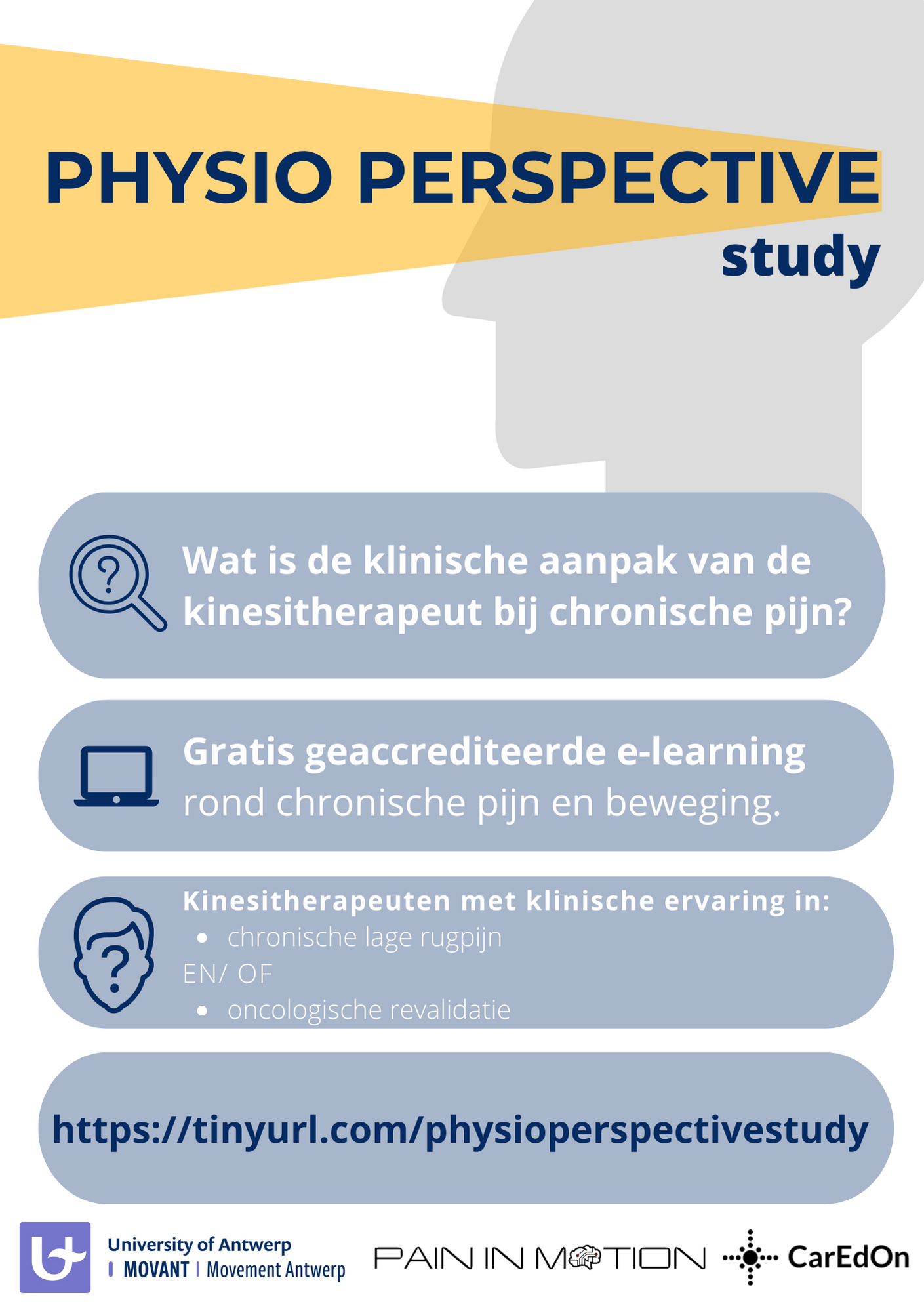The research is clear, physical activity is safe and suitable during and after cancer. Many positive effects are associated with being physically active, including less side-effects of treatment, mental and physical health benefits and a lower chance of cancer recurrence.
Despite these benefits, the uptake of and adherence to physical activity is low in cancer patients during treatment but also after treatment, in the group of cancer survivors. Many barriers exist in different domains, some examples are: social barriers such as a non-supportive environment, organizational barriers such as lack of time but also the lack of support from a health care provider.
Patients feel unsure of what they can and cannot do during exercise. They also often don’t feel comfortable in typical exercise situations and indicate that they rather exercise in an environment with other cancer survivors and with knowledgeable supervisors. Another important barrier is that these topics are not addressed during regular consultations and that even if this topic is brought to the table, patients receive very little information. Studies suggests that 30-70% of cancer survivors are not advised to exercise by their health care provider (HCP).
HCPs play a pivotal role in providing the correct information and resources on physical activity for cancer survivors.
However, interviews with HCPs show that they face difficulties in fulfilling this role. Barriers that they face are various and some examples are: a lack of time, anticipation of failure, deeming this topic as not relevant, not seeing themselves as the person to deliver this information and so on. Contrastingly, most HCPs are aware of the benefits of physical activity but lack knowledge about guidelines and implementation of exercise indicating a knowledge to action gap.
Ramsey et al. did a large scale study in a group of HCPS and looked at knowledge, practices, barriers, and facilitators of exercise in cancer care. They found that although participants generally agreed that exercise counselling should be part of their routine care, only two-thirds agreed that it was actually part of their routine. Barriers that were expressed, were safety concerns (48%), limited time during visits (47%), cancer survivors being told by friends and family to rest (46%), and not knowing how to screen cancer survivors for their suitability and safety to exercise (40%). Also, despite stating that they have knowledge of these guidelines, only 22% of medical practitioners, 30% of nurses, 65% of exercise specialists, and 7% of non-exercise allied health practitioners accurately recalled the specifics of these guidelines.
So it is unclear what health care providers actually recommend and prescribe as exercise for cancer patients and survivors.
A specific subset of the population of cancer survivors warrants extra attention to their physical activity and exercise journey, are those who suffer from persistent pain after ending cancer treatment. The population of the cancer survivors that are burdened by chronic pain is large and this group has an added need for physical activity as this is a key part in the treatment of chronic pain.
Guidelines recommend physical activity as key part of the treatment, but pain is also a big barrier towards participating in an active lifestyle. In addition, as mentioned in this blogpost, the difficulties that we see in health care communication, are also prevalent in this group of patients. However, it is unclear how the presence of chronic pain colors the health care interactions.
This is part of the research question of the Physio Perspective Study, a study that aims to better understand the attitudes, beliefs, knowledge and exercise prescription behavior of physiotherapists in the population of cancer survivors with chronic pain.
The Physio Perspective Study researches the attitudes, beliefs, knowledge and exercise prescription behavior of physiotherapists when it comes to cancer survivors with chronic pain but also the population of chronic low back pain patients.
As part of the study, physiotherapists that participate gain free access to an e-learning on the topic of physical activity and chronic pain. Within this e-learning, a complete module is dedicated to the specific population of cancer survivors with chronic pain. We also provide practical knowledge on physical activity in an chronic pain population.
The study is certified by Pro-Q-Kine, and will give you 6 points for the Pro-Q-Kine accreditation for Belgian physiotherapists.
Follow this link : https://tinyurl.com/physioperspectivestudy to be part of the study.
If you are not a physiotherapist, but still would like to learn more on the topic of chronic pain and physical activity? Contact us for more information on physioperspectivestudy@gmail.com.
Blog post written by Sophie Van Dijck

References:
Ramsey I, Chan A, Charalambous A, Cheung Y, Darling H, Eng L, et al. Exercise counselling and referral in cancer care: an international scoping survey of health care practitioners’ knowledge, practices, barriers, and facilitators. Supportive Care in Cancer. 2022;30:1-13.
Oncology ESfM. ESMO Expert Consensus Statements on Cancer Survivorship: promoting high-quality survivorship care and research in Europe ESMO [Available from: https://www.esmo.org/guidelines/esmo-expert-consensus-statements/esmo-expert-consensus-statements-on-cancer-survivorship-promoting-high-quality-survivorship-care-and-research-in-europe.
Nyrop KA, Callahan LF, Rini C, Altpeter M, Hackney B, DePue A, et al. Aromatase inhibitor associated arthralgia: the importance of oncology provider-patient communication about side effects and potential management through physical activity. Support Care Cancer. 2016;24(6):2643-50.